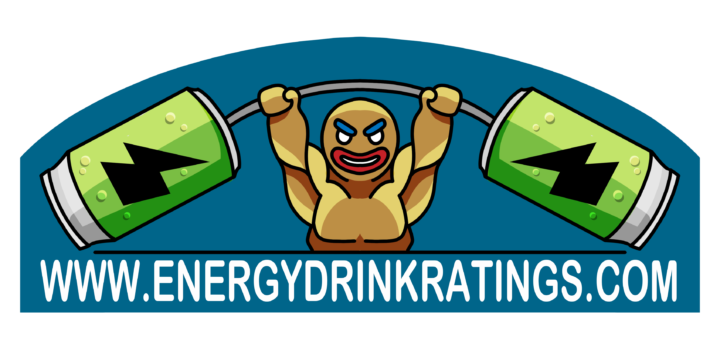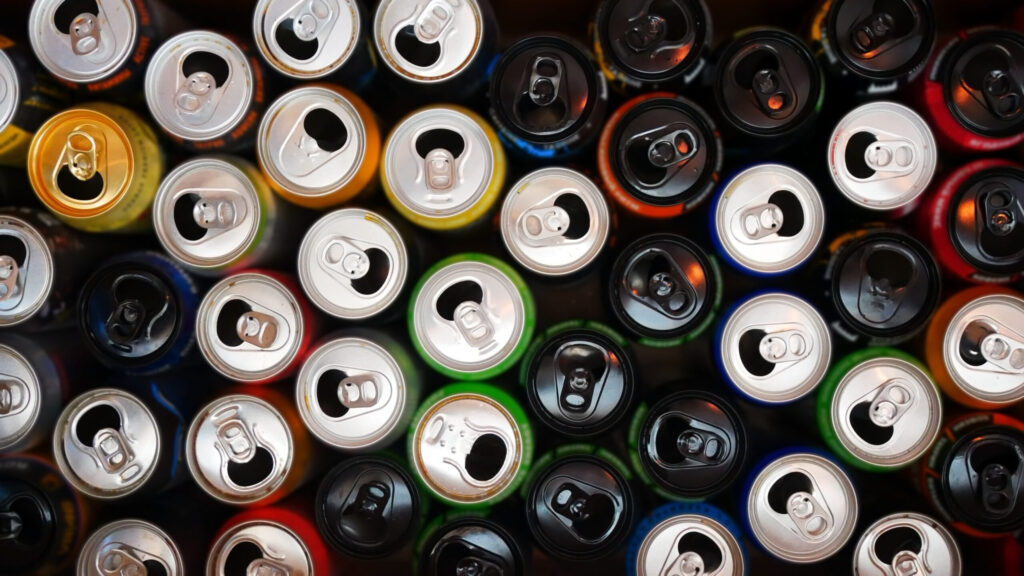Energy drinks have become the lifeblood for many seeking that extra pep in their step, a burst of stamina, or just a quick jolt to power through the day. Let’s take a closer look at the ingredients that make these beverages the go-to tincture for energy enthusiasts around the globe.
1. Caffeine
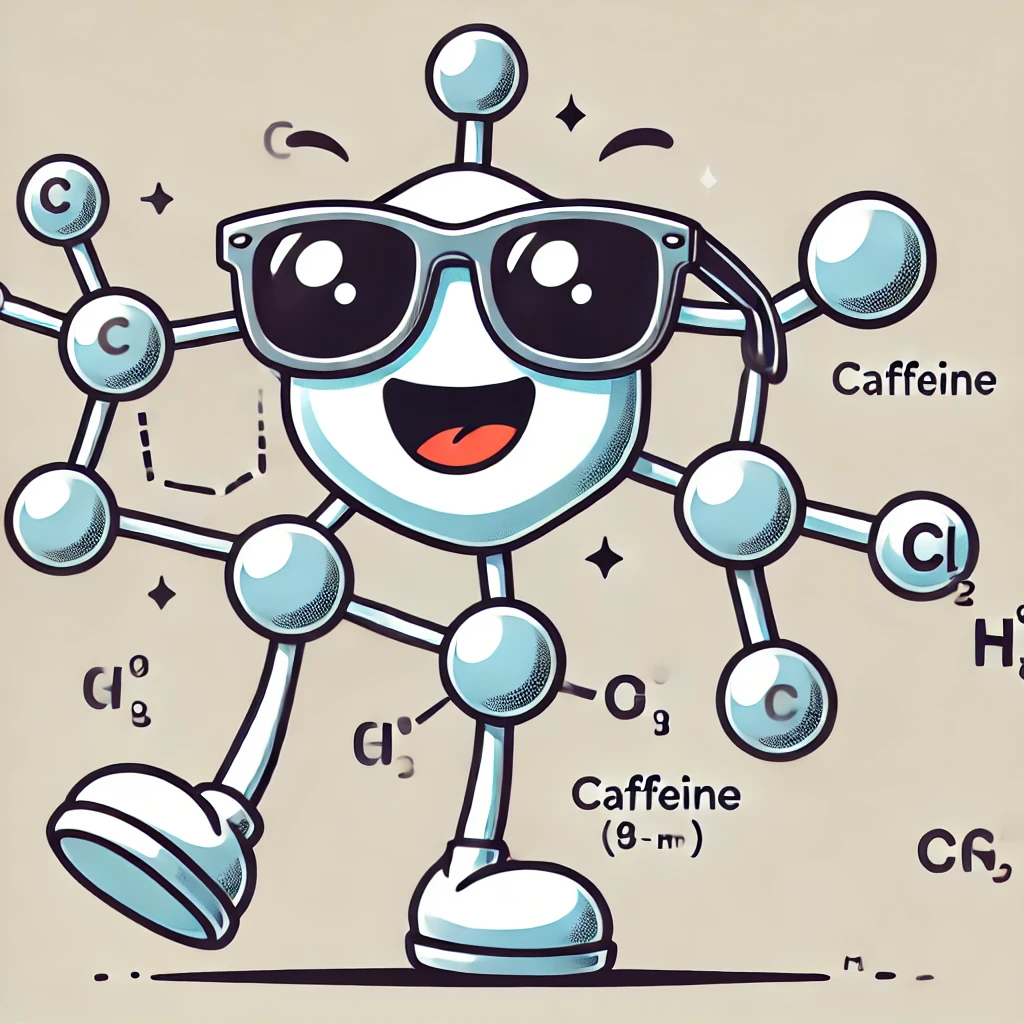
Caffeine is the heart and soul of energy drinks, the magic that keeps our eyes wide open and our minds alert. Found in amounts ranging from a mere 50 milligrams to a heart-racing 300 milligrams per serving, caffeine is the trusted companion for anyone needing a swift kick of wakefulness.
Caffeine’s story stretches back thousands of years. In ancient China, around 2737 BCE, Emperor Shen Nung discovered tea when leaves from a wild tree blew into his pot of boiling water. This serendipitous event led to the widespread consumption of tea, a natural source of caffeine, across the region.
In Ethiopia, around the 9th century, legend has it that a goat herder named Kaldi noticed his goats becoming unusually energetic after eating berries from a particular tree. Curious, Kaldi tried the berries himself and experienced the same burst of energy. These berries were coffee beans, and their stimulating effects soon spread to the Arabian Peninsula, where coffee cultivation and trade began by the 15th century.
Caffeine, scientifically known as 1,3,7-trimethylxanthine, is a central nervous system stimulant. Its molecular structure consists of a xanthine core with three methyl groups attached at positions 1, 3, and 7. This structure allows caffeine to interact with adenosine receptors in the brain, blocking the calming effects of adenosine and leading to increased alertness and wakefulness.
Here’s the molecular formula for caffeine: C8H10N4O2. It’s composed of carbon, hydrogen, nitrogen, and oxygen atoms, forming a white, crystalline powder that is water-soluble. The structural simplicity of caffeine belies its powerful impact on the human body.
Caffeine is naturally found in over 60 plant species. Some of the most common natural sources include:
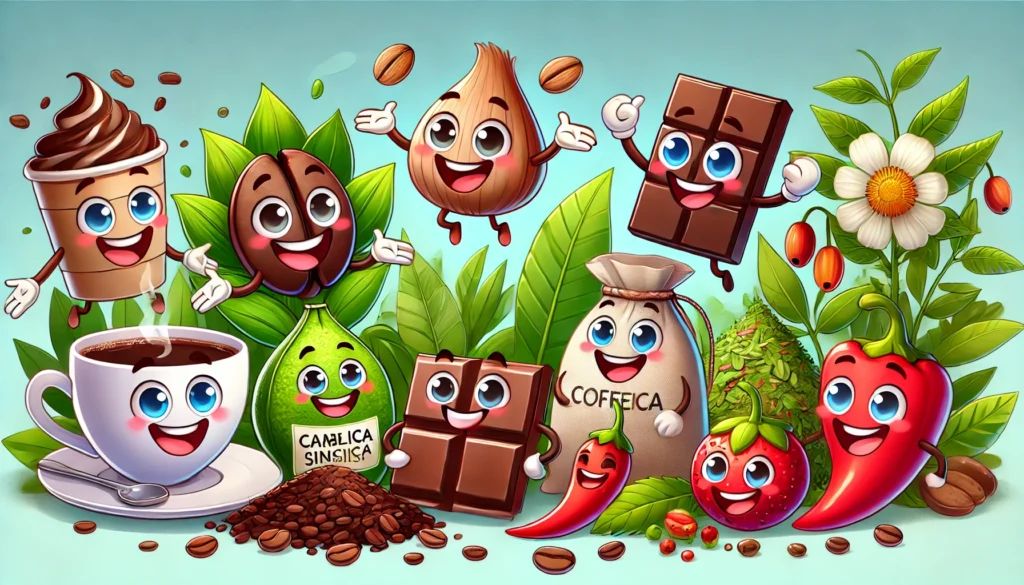
- Coffee Beans: The seeds of Coffea plants, coffee beans are perhaps the most well-known source of caffeine. Both Arabica and Robusta varieties are cultivated globally, with varying caffeine content.
- Tea Leaves: Leaves from the Camellia sinensis plant are used to make tea, which contains varying levels of caffeine depending on the type of tea and how it is processed.
- Cacao Beans: The primary ingredient in chocolate, cacao beans contain caffeine and theobromine, another stimulant. Dark chocolate typically has higher caffeine content than milk chocolate.
- Yerba Mate: A traditional South American beverage made from the leaves of the Ilex paraguariensis plant, yerba mate offers a caffeine boost along with a wealth of antioxidants and nutrients.
- Guarana Berries: Native to the Amazon basin, guarana seeds contain about twice the caffeine content of coffee beans and are often used in energy drinks and supplements.
While caffeine is abundant in nature, the demand for it in beverages, foods, and supplements has led to the development of synthetic caffeine. Manufactured caffeine is chemically identical to natural caffeine and is produced through a series of chemical reactions. The process typically involves the synthesis of urea and other precursors, resulting in a pure form of caffeine that is added to a wide range of products.
Synthetic caffeine is often used in energy drinks, sodas, and pharmaceuticals due to its cost-effectiveness and consistent potency. Despite being chemically identical to natural caffeine, some purists argue that natural sources provide additional compounds that may enhance the overall experience.
Caffeine’s role in energy drinks is not just about wakefulness. It also enhances physical performance, improves cognitive function, and boosts metabolism. These effects make it a versatile and indispensable ingredient in the energy drink industry.
2. Taurine
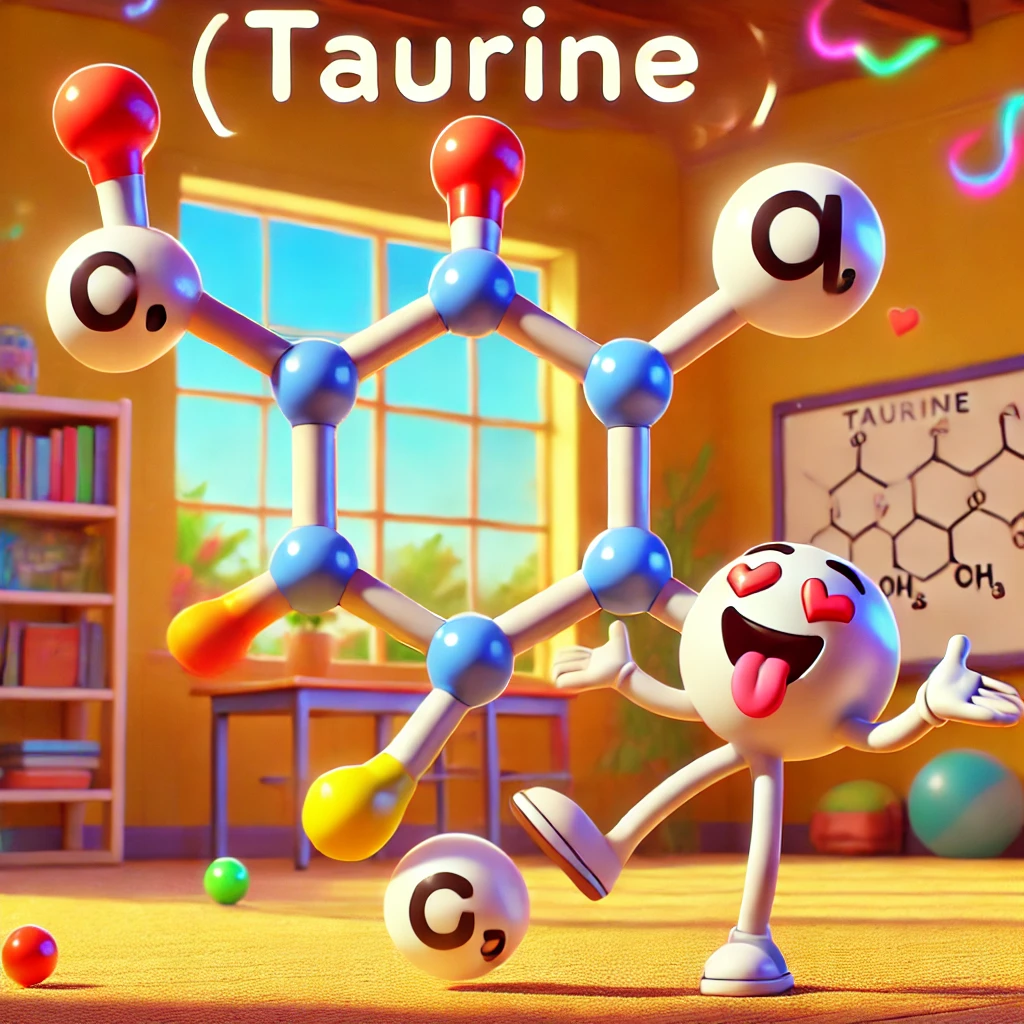
Taurine is a name that resonates with energy enthusiasts and gym-goers alike. An amino acid with an intriguing moniker, taurine offers effects as fascinating as its name. Found naturally in meats and fish, taurine is believed to enhance mental sharpness and physical endurance, making it an essential yet often overlooked ingredient in the world of energy drinks. It’s like the silent partner in your energy-boosting duo, providing subtle yet significant support.
Taurine’s discovery dates back to the 19th century. It was first isolated from ox bile by German scientists Friedrich Tiedemann and Leopold Gmelin in 1827, hence its name, derived from the Latin word “taurus,” meaning bull or ox. Initially, taurine was studied for its role in bile acid conjugation. However, over the years, research has unveiled a broader spectrum of benefits, particularly in human physiology.
Taurine is abundant in the human body, especially in the brain, heart, retina, and skeletal muscles. Unlike most amino acids, it is not incorporated into proteins but exists freely. This unique presence allows taurine to participate in various physiological processes, ranging from bile salt formation to osmoregulation and calcium signaling.
Taurine is naturally found in various foods, especially those high in protein. Some common natural sources include:
- Meat: Taurine is abundant in beef, pork, and lamb, contributing significantly to the total intake for individuals consuming these meats regularly.
- Fish and Seafood: Fish, particularly dark meat fish like tuna and mackerel, are rich in taurine. Shellfish, such as scallops and shrimp, also contain high levels of this amino acid.
- Dairy Products: Milk and dairy products provide a modest amount of taurine, contributing to its intake in the diet.
- Breast Milk: Human breast milk is a crucial source of taurine for infants, playing a significant role in their development, particularly in the brain and eyes.
- Eggs: While not as rich in taurine as meat or fish, eggs still contribute to the overall dietary intake of this amino acid.

Taurine’s inclusion in energy drinks is primarily due to its potential to enhance mental and physical performance. It works synergistically with caffeine, another common ingredient, to boost alertness and reduce fatigue. Taurine’s role in energy drinks includes:
- Mental Sharpness: Taurine is believed to improve cognitive function by modulating neurotransmitter activity and protecting against oxidative stress. This leads to enhanced focus and mental clarity, crucial for tasks requiring sustained attention.
- Physical Endurance: Taurine helps improve physical performance by reducing muscle fatigue and aiding in muscle recovery. Its ability to regulate calcium ions within muscle cells contributes to better muscle contractions and endurance.
- Hydration: Taurine aids in maintaining proper hydration levels within cells, essential for athletes and individuals engaging in strenuous activities.
- Antioxidant Properties: Taurine has antioxidant effects, protecting cells from damage caused by free radicals. This is particularly beneficial during intense physical exertion, where oxidative stress is heightened.
While generally considered safe, it’s important to consume taurine in moderation, especially when combined with high doses of caffeine and other stimulants found in energy drinks. Excessive intake can lead to side effects such as headaches, dizziness, and gastrointestinal discomfort.
3. Sugar
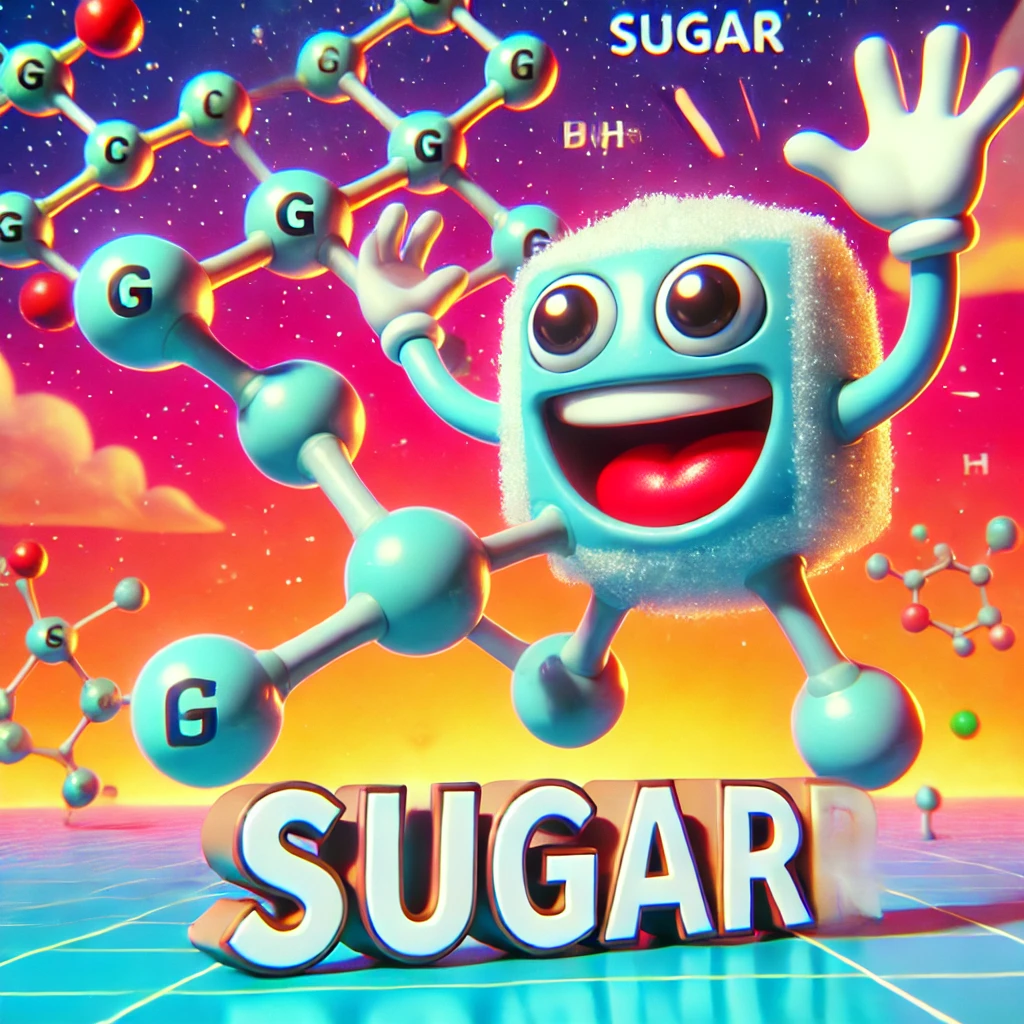
Ah, sugar, the sweet nectar that offers instant energy. Sugar is the essential source of quick energy in energy drinks, sourced from cane sugar, high-fructose corn syrup, or sweeteners like stevia and sucralose.
Originally a luxury, sugar’s history spans centuries, becoming a staple through global trade and colonialism. Chemically, sugars like sucrose and HFCS provide sweetness and energy. Natural sources include fruits and honey, while stevia and sucralose are popular sugar substitutes.
In energy drinks, sugar enhances flavor and provides quick energy but has health concerns like obesity and diabetes. As consumer preferences shift, there’s a growing demand for sugar-free options, prompting industry innovation to meet health-conscious needs.
4. B Vitamins
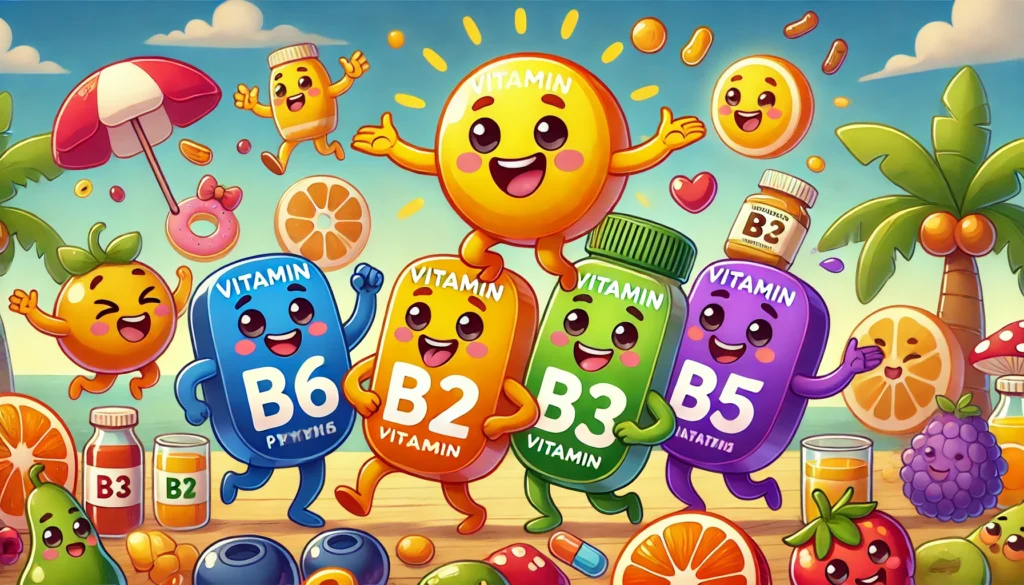
B vitamins—such as B6, B12, niacin (B3), riboflavin (B2), and pantothenic acid (B5)—are indispensable nutrients crucial for energy metabolism. They’re often referred to as the “energy vitamins” because of their vital roles in converting the food we eat into the energy our bodies need to function optimally.
- Vitamin B6 (Pyridoxine): This essential vitamin is pivotal for protein metabolism, breaking down proteins into amino acids necessary for tissue repair and growth. It’s also integral to neurotransmitter synthesis, influencing mood and cognitive functions crucial for mental sharpness.
- Vitamin B12 (Cobalamin): Found predominantly in animal products like meat, fish, and dairy, vitamin B12 is essential for nerve health, DNA synthesis, and red blood cell formation. Its role in maintaining the nervous system’s integrity underscores its importance in overall vitality and cognitive function.
- Niacin (Vitamin B3): Niacin is critical for converting carbohydrates into glucose, the primary fuel source for our bodies. Beyond energy production, it supports cellular metabolism and plays a role in DNA repair mechanisms, essential for maintaining optimal cellular function.
- Riboflavin (Vitamin B2): Involved in energy production pathways, riboflavin facilitates the metabolism of fats, carbohydrates, and proteins. Its antioxidant properties also help protect cells from oxidative stress, contributing to overall health and vitality.
- Pantothenic Acid (Vitamin B5): Essential for synthesizing coenzyme A (CoA), which is involved in numerous metabolic processes, pantothenic acid plays a crucial role in energy production from carbohydrates, fats, and proteins. It also supports adrenal function and helps regulate hormone production, contributing to overall energy balance and stress management.
These B vitamins are not only essential for energy metabolism but also support various aspects of health, from neurological function to cellular repair, making them indispensable for maintaining overall well-being and vitality.

5. Guarana
Guarana, the Amazonian wonder seed, packs twice the caffeine punch of coffee beans. This potent stimulant enhances alertness and stamina, making it a popular addition to many energy drink formulations.

6. Ginseng
Ginseng, an ancient herb revered for its health benefits, brings a touch of tradition to modern energy drinks. It’s glorified for boosting energy, reducing stress, and enhancing cognitive function. Think of it as nature’s gift to our fast-paced lives.
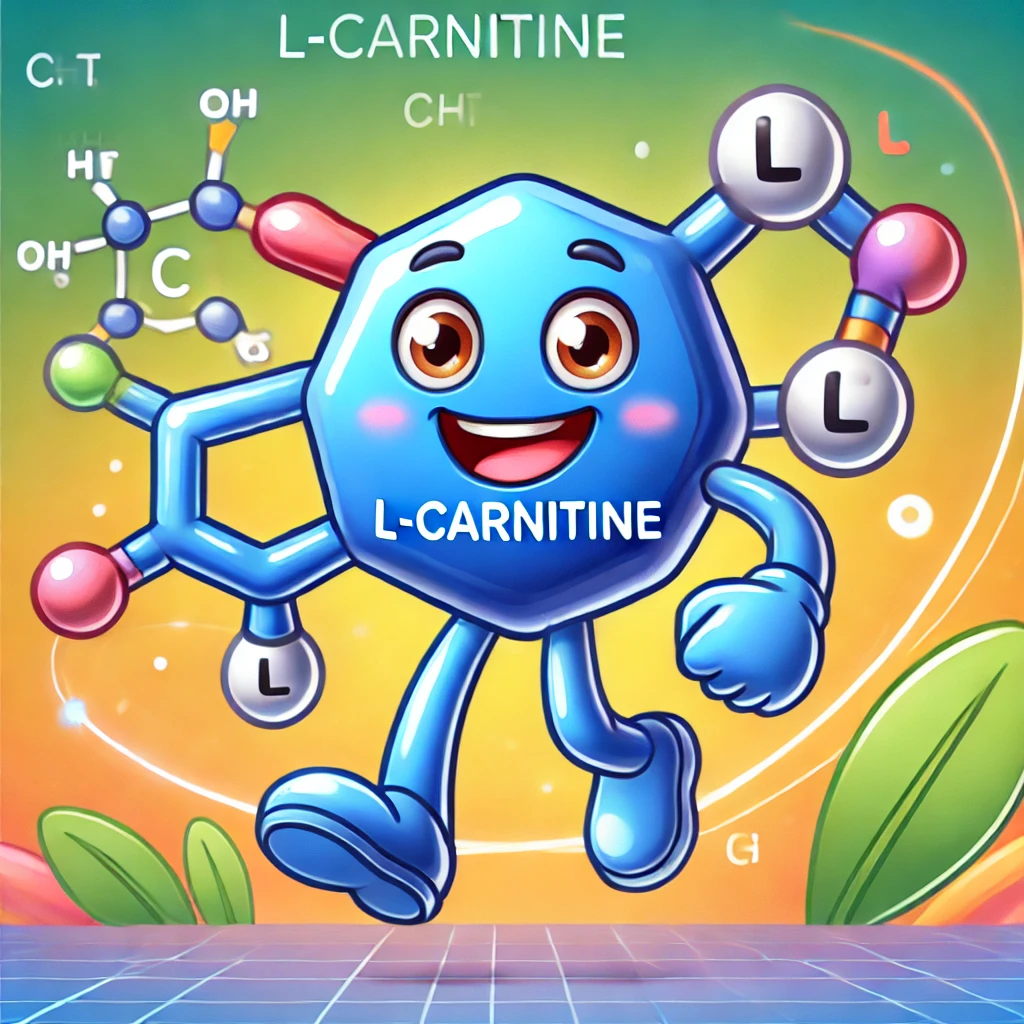
7. L-Carnitine
L-Carnitine is an amino acid derivative that plays a crucial role in energy production by ferrying fatty acids into the mitochondria. It’s the behind-the-scenes player that helps improve endurance and overall physical performance.
8. Glucuronolactone
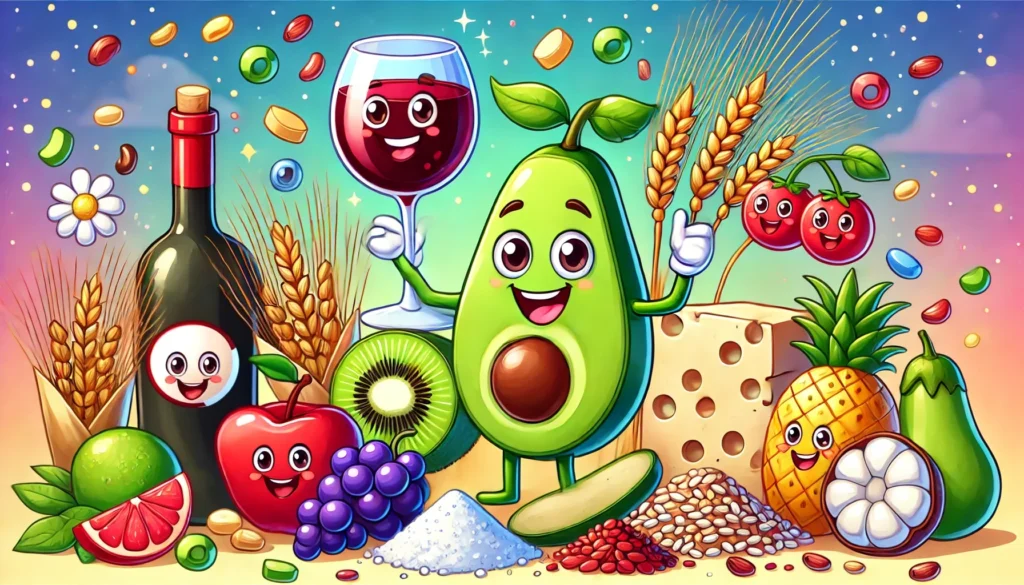
This naturally occurring substance is found in the connective tissues of animals and humans. Additionally, it is present in small amounts in certain foods. Some natural sources of glucuronolactone include:
- Animal Tissues: It is naturally present in the connective tissues of animals.
- Certain Plants: Some plant gums, such as gum arabic and tragacanth, contain glucuronolactone.
- Red Wine: Small amounts of glucuronolactone can be found in red wine.
- Grains: It can be present in certain grains and cereals.
- Fruits and Vegetables: Although not a significant source, trace amounts can be found in various fruits and vegetables.
While the science behind it is still emerging, glucuronolactone remains a staple in the energy drink arsenal.
9. Inositol
Inositol, a sugar that’s involved in cellular signaling, is often included for its potential benefits to mood and cognitive function. It’s another layer in the complex energy-boosting matrix.
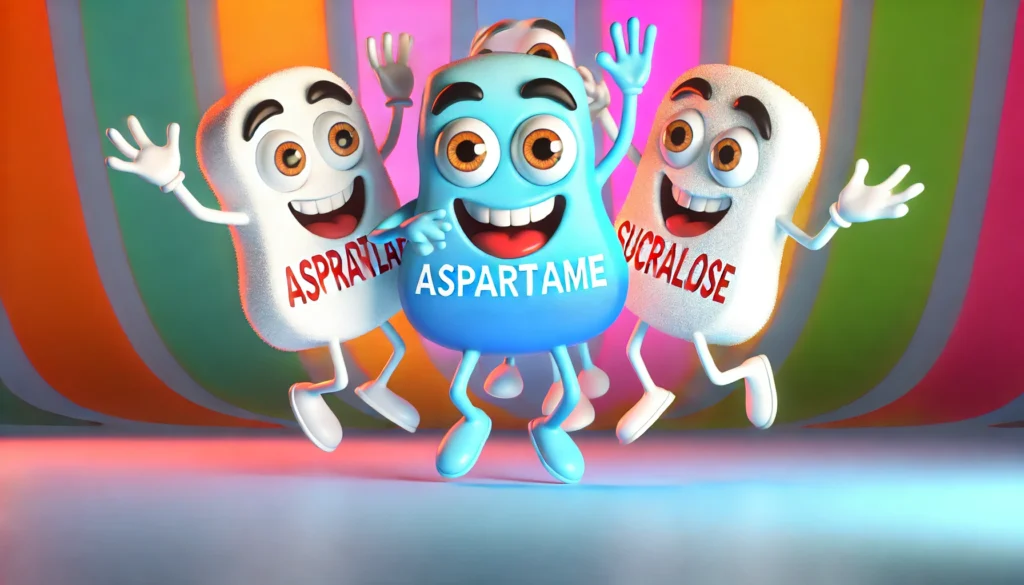
10. Artificial Sweeteners
To keep the sugar content low without sacrificing sweetness, artificial sweeteners like aspartame, sucralose, and acesulfame potassium step in. These provide the sweetness without the calories, a win-win for those watching their waistlines.
11. Carbonated Water
The fizz in your energy drink isn’t just for fun – carbonation can enhance the absorption of ingredients, making that energy boost feel even more immediate. The extra pressure in your stomach accelerates the transfer of contents into the small intestine, where nutrients are more efficiently absorbed. Plus, it adds a refreshing zing!
12. Electrolytes
For the athletes among us, electrolytes like sodium, potassium, and magnesium are key. These minerals help maintain hydration and muscle function, especially during those intense workouts.
13. Herbal Extracts
Herbal extracts like green tea, yerba mate, and ginkgo biloba bring their own unique benefits to the table. Whether it’s the antioxidant power of green tea or the stimulating effects of yerba mate, these ingredients add depth to the energy drink formula.
14. Amino Acids
Beyond taurine and L-carnitine, amino acids like beta-alanine and tyrosine often find their way into energy drinks. These building blocks of protein can help reduce muscle fatigue and improve mental focus.
15. Ginger Root
Ginger root extract, known for its digestive benefits, is sometimes included to balance out the potential stomach-upsetting effects of caffeine and other stimulants. It’s the soothing friend in a can full of excitements.
16. Citrus Aurantium (Bitter Orange)
This ingredient, a natural stimulant, is often added for its thermogenic properties, helping to increase energy expenditure and potentially enhance weight loss efforts.
17. Milk Thistle Extract
Known for its liver-supporting properties, milk thistle extract is sometimes included to counteract the potential stress energy drinks can put on the liver. It’s the guardian watching over your body’s detox powerhouse.
18. Ginkgo Biloba
Ginkgo biloba, revered in traditional medicine, is believed to improve cognitive function and memory. Including it in energy drinks is a nod to those seeking mental clarity and focus.
19. Green Coffee Bean Extract
Unroasted coffee beans retain higher levels of chlorogenic acids, which are believed to offer antioxidant benefits and support weight management. Green coffee bean extract is another tool in the energy drink’s arsenal.
20. Yerba Mate
Yerba mate, a South American favorite, provides a gentle caffeine boost along with a wealth of antioxidants and nutrients. It’s like a whisper of energy rather than a shout, perfect for those seeking a more balanced pick-me-up.
Energy drinks are a complex brew of ingredients, each playing its part in delivering that much-needed boost. From ancient herbal remedies to cutting-edge amino acids, these beverages blend tradition and innovation to keep us energized and alert. Whether you’re powering through a workout, a long day at work, or just need that extra kick to get you going, understanding what’s in your energy drink can help you make the best choice for your needs.
Yerba mate, a South American favorite, provides a gentle caffeine boost along with a wealth of antioxidants and nutrients. It’s like a whisper of energy rather than a shout, perfect for those seeking a more balanced pick-me-up.
21. L-Theanine
L-theanine is an amino acid commonly found in green tea and certain mushrooms. It is known for promoting relaxation without causing drowsiness, making it a popular supplement for reducing stress and anxiety.
L-theanine can enhance alpha brain wave activity, which is associated with a calm, focused state of mind. Often combined with caffeine in beverages and supplements, L-theanine helps to smooth out the stimulating effects of caffeine, leading to increased mental clarity and reduced jitteriness. Studies suggest it may also improve sleep quality when taken alone, especially in people who struggle with high-stress levels. Due to its calming effects, L-theanine is widely used as a natural way to support focus and relaxation simultaneously.
